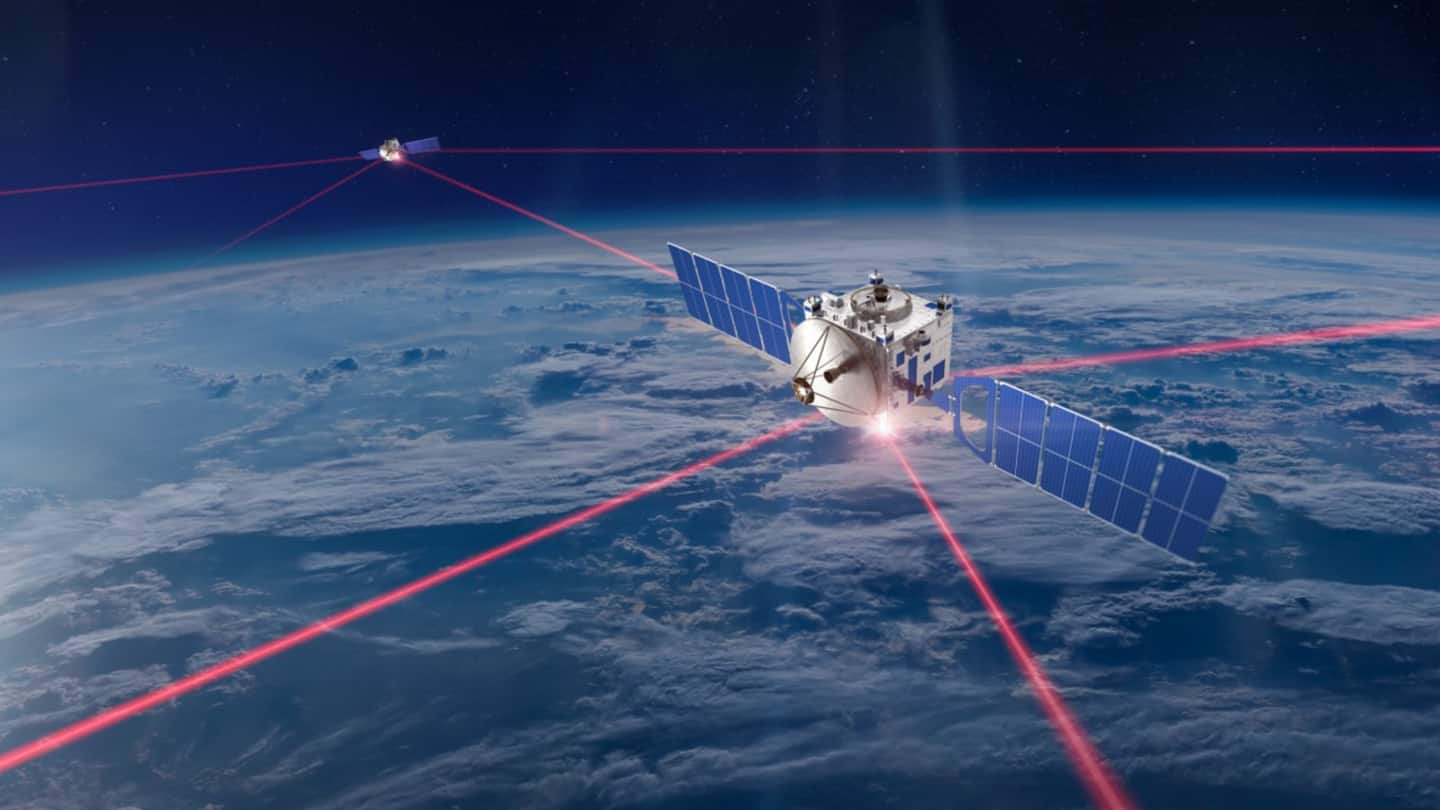
SpaceX Starlink satellites featuring laser intercommunication enhance polar region coverage
What's the story
SpaceX launched 10 laser link-enabled Starlink satellites into polar orbit using its Transporter-1 dedicated rideshare mission on January 24.
Laser links will allow Starlink satellites to form a data-sharing network. This will reduce connection latency and enhance satellite broadband in higher latitude regions while reducing the number of ground stations necessary.
This is part of a beta broadband internet program utilizing these satellites.
Lightspeed
Laser links explained: Fiber optics minus the fiber
Laser linked satellites can relay data between each other, either in the same orbital plane or in adjacent orbital planes.
In a Reddit Ask-Me-Anything (AMA) last year, Starlink engineers said light travels faster in space than through fiber, cutting down latency. The reduced ground stations and satellite hops further improve latency.
SpaceX said the costs and scalability of the technology were a challenge.
The underserved
Sun-synchronous orbit of satellites to improve connectivity in hard-to-reach areas
Polar orbits are also called Sun-synchronous orbits (SSO). European Space Agency (ESA) explains SSO satellites orbit from north to south rather than from east to west, passing roughly over the Earth's poles.
SpaceX said the beta program users will face intermittent disconnects until the satellite network is complete.
SpaceX's ten satellites launched just two weeks after receiving the Federal Communications Commission's (FCC) nod.
Beamed across
Inter-satellite communication could lower network response times
Laser link eliminates the need for ground stations over poles as satellites covering remote areas can interact with other satellites that have direct links to a ground station.
SpaceX also got FCC approval for redirection of its Ku and Ka-band satellites to lower altitudes. The 560km orbital altitude of the satellite network improves latency, besides sporting other long-term benefits.
Lesser space junk
SpaceX highlights its foresight in FCC application detailing laser link
Starlink presently offers speeds up to 150 Mb/s in high latitude regions of America, Canada, and the UK.
SpaceX filed for FCC approval of the laser link in April 2020. The document says Starlink would provide better broadband to under-served Americans, besides enhancing space safety.
Lower altitudes ensure orbital debris enters Earth's atmosphere and burns up instead of becoming hazardous space junk.
Laser focus
Elon says all 2022 satellite launches will be laser link-enabled
In a tweet, SpaceX CEO Elon Musk said only SSO satellites launching this year are laser-enabled, but all satellites launching next year will feature the tech.
The aerospace company said the satellites can serve both residential and US government users in hard-to-reach polar regions.
Meanwhile, Amazon has also secured FCC approval to launch 3,236 satellites offering low-latency internet, a $10 billion project.
Locking horns
Competitors approach FCC over concerns Starlink's lasers could increase interference
SpaceX urged the FCC to expedite approval for 348 satellites in SSO orbits. FCC approved only 10 satellites after competitors raised concerns over interference.
Amazon's Project Kuiper, Viasat, Kepler Communications, and Pacific Dataport requested the FCC to even reject the partial grant to SpaceX.
Musk alleged Amazon is attempting to hamstring a Starlink system today for a satellite it plans to launch years from now.
Twitter Post
Musk says Amazon is hamstringing Starlink
It does not serve the public to hamstring Starlink today for an Amazon satellite system that is at best several years away from operation
— Elon Musk (@elonmusk) January 26, 2021